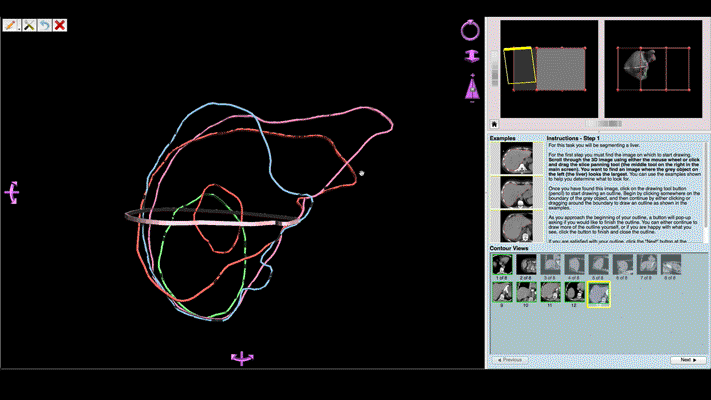Prof. Ruth West (University of North Texas), is engaged in collaborative research with Prof. Cindy Grimm (Oregon State Univserity) and Prof. Tao Ju (Washington University St. Louis) to study the cognitive and perceptual basis of how experts extract 3D shapes from volumetric data, such as electron tomography, MRI or CT imaging. This process, known as “segmentation” plays an essential role in the interpretation and analysis of volume data in a variety of application domains.
Understanding what a segmenter sees, thinks, and does while interacting with a data set will help to make future tools more efficient, alleviating the major scientific bottleneck posed by the time-intensive nature of segmentation. It will also help in developing better tools to improve the accuracy and repeatability of the segmentation process, positively enhancing the quality of the resulting data for use in a variety of applications, including biomedicine, clinical practice and environmental engineering.
This work is supported by NSF Collaborative: Developing Conceptual Models for Navigation, Marking and Inspection in the Context of 3D Image Segmentation, IIS-1302248, IIS-1302142, IIS-1302200.
IRB Information








